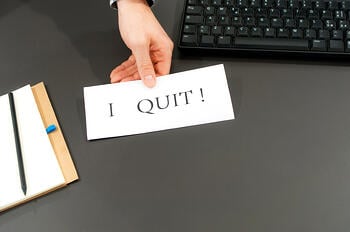 I’m not the kind of guy who tends to do a victory dance when he finds his point of view vindicated. But I came close the other day when I read about the Princeton University study that put the kibosh on Malcolm Gladwell’s famous—and utterly misleading—assertion that all it takes to be successful in any field is 10,000 hours of practice.
I’m not the kind of guy who tends to do a victory dance when he finds his point of view vindicated. But I came close the other day when I read about the Princeton University study that put the kibosh on Malcolm Gladwell’s famous—and utterly misleading—assertion that all it takes to be successful in any field is 10,000 hours of practice.
I knew Malcolm Gladwell was wrong the moment I heard his crazy claim. The 10,000-hour nonsense is the central theme, the activating idea, in Gladwell’s book Outliers: The Story of Success, published in 2008. Gladwell observed that the best NHL players grew up on the ice in Canada; most were skating by age three, and they had something like, umm, 10,000 hours’ practice by the time the NHL scouts came to watch them play. And he noted that Bill Gates grew up in a rare (for that era) environment where he had access to computers from an early age and was able to devote, hmm, 10,000 hours to try his hand at programming these new contraptions and get good at it. The Beatles? You guessed it, 10,000 hours in the basement or in empty or crowded dance halls in Liverpool. It’s not talent, Gladwell kept repeating, it’s simply 10,000 hours.
That was his axiom. And the corollary? You—yes, you!—can be as successful as John Lennon, Bill Gates, or Wayne Gretzky… if you simply commit to 10,000 hours of practice. Gladwell specifically claimed that his observation about practice time proved that all that talk about talent was just wrong. Perhaps even more surprising than Gladwell’s allegation was that so many people fell for it, hook, line, and career. Pundits wrote about it, teachers preached it, and young people rearranged their life to fit in 10,000 hours of practice. That’s 5 years of 40-hour practice weeks, if my arithmetic is right. Most didn’t last 10,000 hours. Is that why they’re not gazillionnaires today? Not exactly.
.jpg?width=240&name=question_mark_and_figure_(1).jpg) For leaders of sales organizations and sales managers, there are questions that are easy to answer, questions that are a little more difficult, and then there are these. Questions that are tough. Cruxy. Important. Even though you'd rather not be asked the following questions, they're important to ask, even if you don't yet know the answer. Think about these as we head into the final month of the year, and allow this introspection to help you plan for a successful 2015:
For leaders of sales organizations and sales managers, there are questions that are easy to answer, questions that are a little more difficult, and then there are these. Questions that are tough. Cruxy. Important. Even though you'd rather not be asked the following questions, they're important to ask, even if you don't yet know the answer. Think about these as we head into the final month of the year, and allow this introspection to help you plan for a successful 2015:
 We've spent a fair amount of time recently on this blog talking about your best accounts... the ones you should be spending the most time with. One way to do so, we've suggested, is to
We've spent a fair amount of time recently on this blog talking about your best accounts... the ones you should be spending the most time with. One way to do so, we've suggested, is to  The leaves are turning beautiful shades of red and gold (well, not here in Florida, where the leaves just turn brown and it doesn’t happen until February), so it must be the time of year when thoughts turn to annual sales planning, to making next year markedly better than this year.
The leaves are turning beautiful shades of red and gold (well, not here in Florida, where the leaves just turn brown and it doesn’t happen until February), so it must be the time of year when thoughts turn to annual sales planning, to making next year markedly better than this year. Belly flop. The phrase itself conjures painful memories. You start off with the best intentions... and somehow, along the way, something derails you. Instead of a dive with a tiny splash, you end up landing flat, with a huge splash, and welts on your belly.
Belly flop. The phrase itself conjures painful memories. You start off with the best intentions... and somehow, along the way, something derails you. Instead of a dive with a tiny splash, you end up landing flat, with a huge splash, and welts on your belly. Every sales organization has a product or a service—or an entire product line or category—whose revenue they’re not quite happy with. Management then proceeds to focus on it, to direct extra effort to increasing revenue related to that relatively weak item or category. Make sure you mention those widgets to every client and prospect, they’ll advise. Be certain at least one frammus is a part of every proposal, they’ll demand. Tweet to everyone you know about our skyhook service, they’ll request. Management will, of course, start closely measuring all activity and results related to sales of this particular product, publishing and distributing those metrics widely and frequently throughout the organization.
Every sales organization has a product or a service—or an entire product line or category—whose revenue they’re not quite happy with. Management then proceeds to focus on it, to direct extra effort to increasing revenue related to that relatively weak item or category. Make sure you mention those widgets to every client and prospect, they’ll advise. Be certain at least one frammus is a part of every proposal, they’ll demand. Tweet to everyone you know about our skyhook service, they’ll request. Management will, of course, start closely measuring all activity and results related to sales of this particular product, publishing and distributing those metrics widely and frequently throughout the organization. Approaching new prospects with a
Approaching new prospects with a  I’m not the kind of guy who tends to do a victory dance when he finds his point of view vindicated. But I came close the other day when I read about the
I’m not the kind of guy who tends to do a victory dance when he finds his point of view vindicated. But I came close the other day when I read about the  Sales staff turnover is expensive. I’m not telling you anything you haven’t heard many times before. The Center for Sales Strategy published
Sales staff turnover is expensive. I’m not telling you anything you haven’t heard many times before. The Center for Sales Strategy published 
